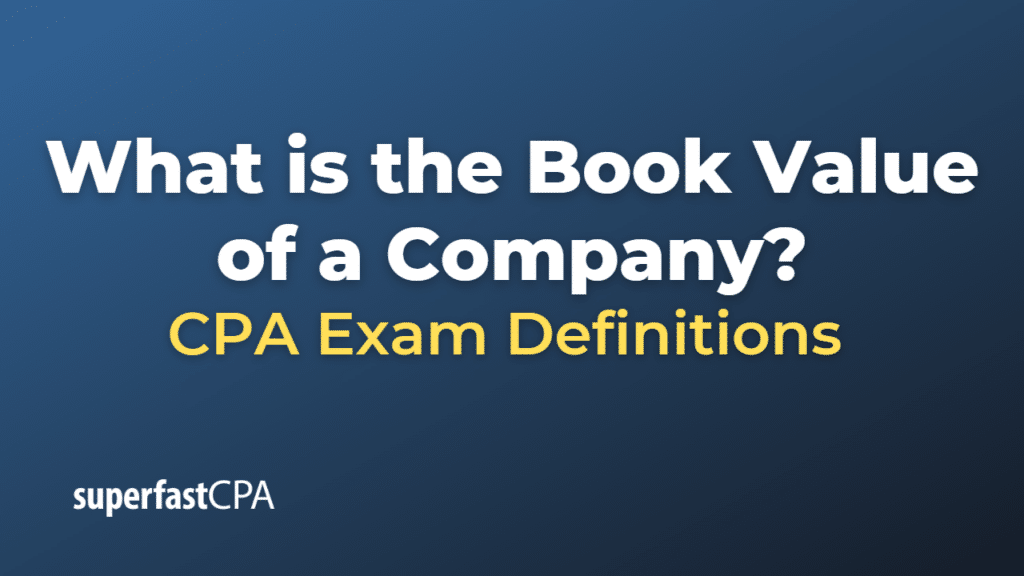Book Value of a Company
The book value of a business, also known as net asset value or carrying value, represents the value of a company’s total assets minus its total liabilities as recorded on its balance sheet. In other words, it is an accounting measure of the company’s net worth.
The book value of a business provides an estimate of the company’s intrinsic value from a financial perspective. It is often used as a valuation metric by investors to assess the worth of a company and compare it to the market value (market capitalization) of the company’s stock.
To calculate the book value of a business, you need to follow these steps:
- Determine the company’s total assets: This includes tangible assets (such as property, plant, and equipment), intangible assets (such as patents, trademarks, and goodwill), and financial assets (such as cash, accounts receivable, and investments).
- Determine the company’s total liabilities: This includes both short-term liabilities (such as accounts payable, short-term debt, and accrued expenses) and long-term liabilities (such as long-term debt, deferred tax liabilities, and pension obligations).
- Subtract the total liabilities from the total assets to arrive at the book value of the business:
Book Value = Total Assets – Total Liabilities
It is important to note that the book value of a business may not always accurately represent its true economic value, as it is based on historical cost and does not take into account factors such as future growth prospects, market conditions, or competitive environment. Therefore, investors should consider other valuation methods and market factors when evaluating a company’s worth.
Example of the Book Value of a Company
Let’s consider a hypothetical example to illustrate the concept of book value for a business.
Imagine that Company ABC has the following financial information on its balance sheet:
Total Assets: $5,000,000
- Cash: $500,000
- Accounts Receivable: $1,000,000
- Inventory: $1,500,000
- Property, Plant, and Equipment: $2,000,000
Total Liabilities: $2,500,000
- Accounts Payable: $500,000
- Short-term Debt: $1,000,000
- Long-term Debt: $1,000,000
To calculate the book value (net worth) of Company ABC, you would subtract its total liabilities from its total assets:
Book Value = Total Assets – Total Liabilities
Book Value = $5,000,000 – $2,500,000 = $2,500,000
In this example, Company ABC’s book value is $2,500,000, which represents the net worth of the company from an accounting perspective.
Now, let’s assume that Company ABC has 200,000 outstanding shares of common stock. To calculate the book value per share, you would divide the total book value by the number of outstanding shares:
Book Value per Share = Total Book Value / Number of Outstanding Shares
Book Value per Share = $2,500,000 / 200,000 = $12.50
In this example, the book value per share for Company ABC is $12.50.
Investors can use the book value per share as a valuation metric to compare with the current market price of the stock. For instance, if Company ABC’s stock is currently trading at $15 per share, the stock is trading at a price-to-book (P/B) ratio of:
P/B Ratio = Market Price per Share / Book Value per Share
P/B Ratio = $15 / $12.50 = 1.2
A P/B ratio above 1 indicates that the market price is higher than the book value, suggesting that the market believes the company has growth potential or other factors not captured by the book value alone. Conversely, a P/B ratio below 1 may indicate that the stock is undervalued, or that the market has a more pessimistic view of the company’s prospects.
It’s important to note that the book value of a business has its limitations and may not accurately reflect the true value of a company in all cases. Investors should consider additional valuation methods and market factors when making investment decisions.












